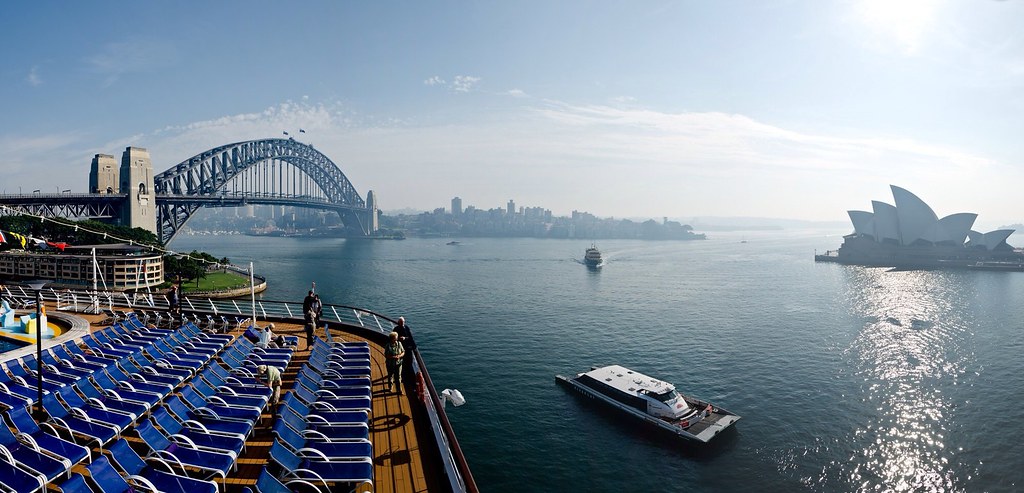
Above: The perfect docking spot for the Volendam.
Some of you will have seen the above picture on Facebook but I thought it an appropriate way to kick off this post, because it perfectly sums up what an amazing berth we had, docked in Circular Quay with the Sydney Opera House on one side and the Harbour Bridge on the other. We were docked in Sydney twice (once at the start and once at the end of our circumnavigation of Australia) and the second time, our berth was a little further away at Darling Harbour - that's why you'll see a Royal Caribbean ship in some of my photos, stealing our prime position from the first visit!

Above: The Sydney Opera House with the CBD (Central Business District) behind, taken from a ferry.
*BORING PHOTOGRAPHY BIT - These are the first photos you on my blog taken with my new Nikon D7000 (same 18-200mm lens). In order to upload them to Flickr, I lowered the resolution so for those of you clicking through to my Flickr page, that is why the photos aren't very big/detailed (although they look fine on the blog of course).*
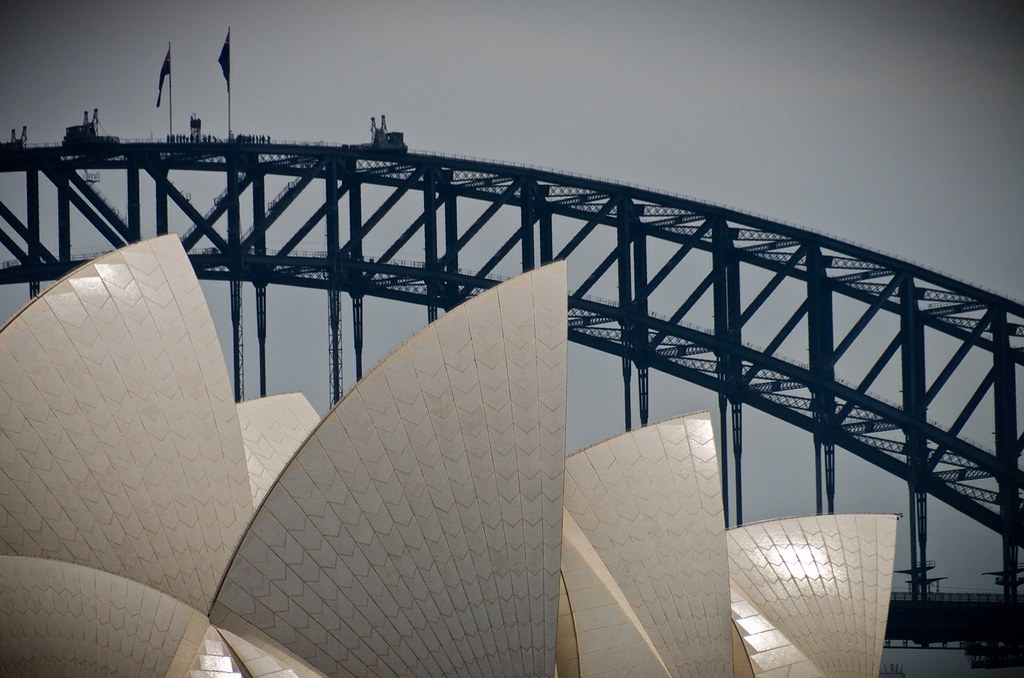
Above: The famous shells of the Opera House (more about those later) with the Harbour Bridge behind.
Sydney is the state capital of New South Wales and the most populous city in Australia. It is located on Australia's south-east coast and has an approximate population of 4.6 million people (as of 2010). The site of the first British colony in Australia, Sydney was established in 1788 at Sydney Cove by Arthur Phillip, commodore of the First Fleet, as a penal colony. The original name was intended to be Albion, but Phillip named the settlement after the British Home Secretary, Thomas Townshend, Lord Sydney.
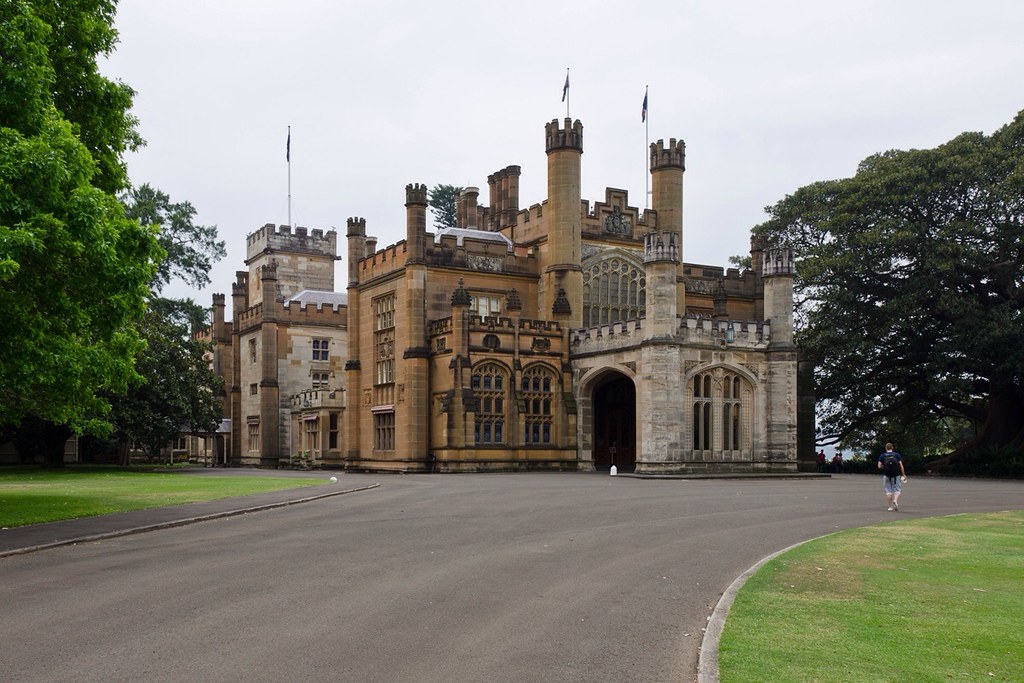
Above: Parliament House, built in 1816 and located in the Royal Botanic Gardens.
I had criminally little time to explore Sydney but I certainly made the most of it. On our first visit, with only two hours off the ship, I walked around Circular Quay (where the Volendam docked), into the Opera House and around the Royal Botanic Gardens. On our second visit, I had longer and took a ferry to Manly Beach, walked up the tourist pylon of the Harbour Bridge, walked through the Central Business District and finally dashed around Darling Harbour! I was pretty shattered after all that but I hope you'll enjoy the photos from my trips.
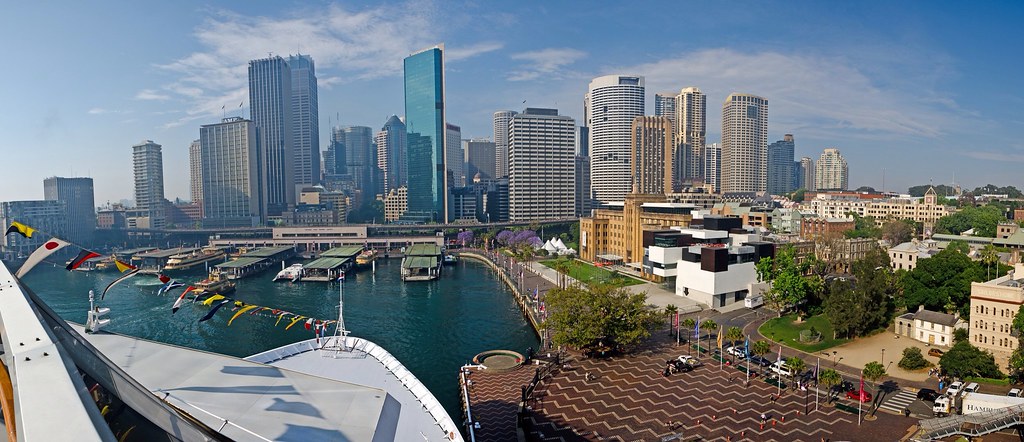
Above: Circular Quay with the Central Business District, as seen from the Volendam.
Sydney is built on hills surrounding Sydney Harbour, where the iconic Sydney Opera House and the Harbour Bridge feature prominently. The hinterland of the metropolitan area is surrounded by national parks, and the coastal regions feature many bays, rivers, inlets and beaches including the famous Bondi Beach and Manly Beach (which I visited). Within the city are many notable parks, including Hyde Park and the Royal Botanic Gardens:
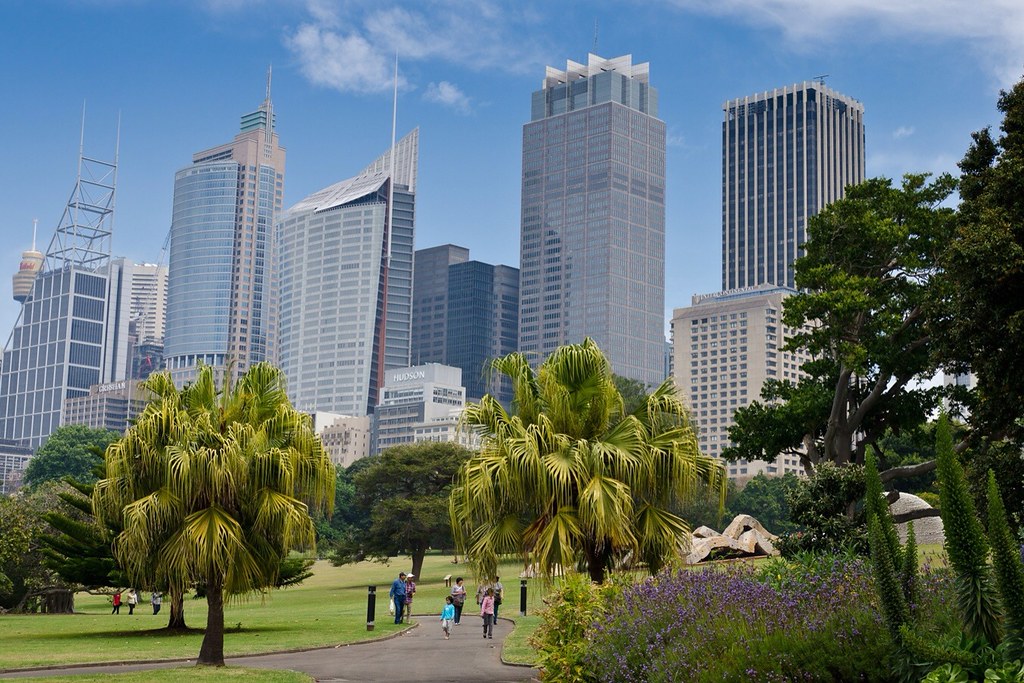
Above: Sydney's Central Business District viewed through the Royal Botanic Gardens.
Sydney's Central Business District (CBD) extends southwards for about 2 miles from Sydney Cove to the area around Central station. The Sydney CBD is bounded on the east side by a chain of parkland, and the west by Darling Harbour, a tourist and nightlife precinct which is where the Volendam was docked on our second visit.

Above: Modern skyscrapers being constructed in the CBD.
One of the most famous buildings in the world is undoubtedly the Sydney Opera House. An icon for Sydney and possibly even the whole of Australia, the Opera House is a multi-venue performing arts centre, conceived and largely built by Danish architect Jørn Utzon, opening in 1973 after a long gestation that had begun with his competition-winning design in 1957.
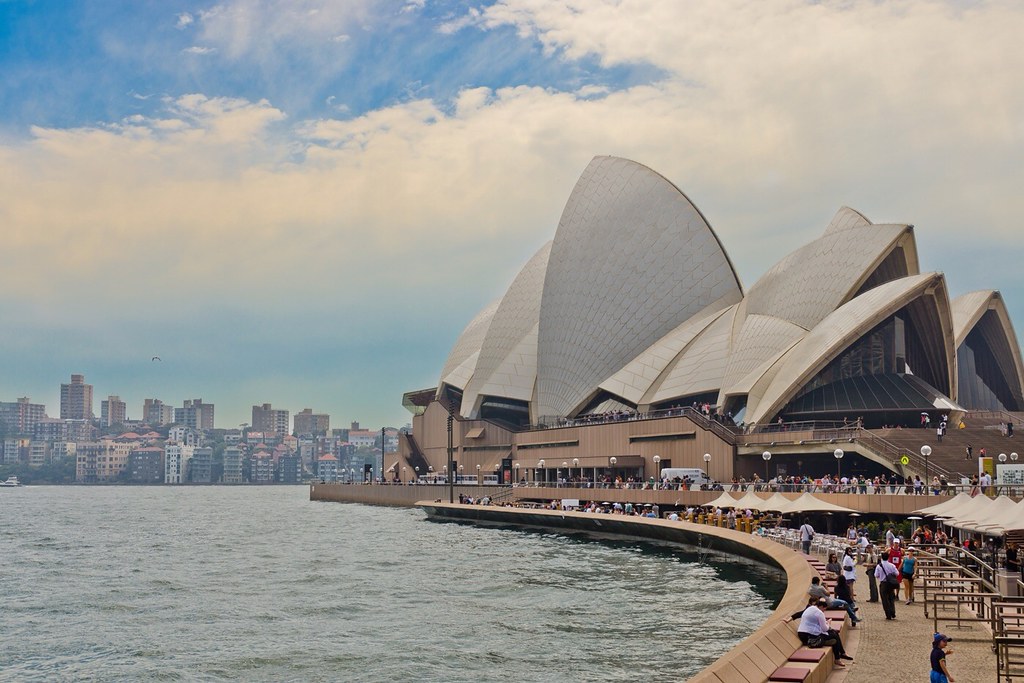
Above: The Opera House approached from Circular Quay.
It is difficult to describe the feeling I had walking towards and around this building. It has always loomed large in my sub-consciousness as I have cousins living near Sydney, and my upbringing included a smattering of Australian culture from TV shows such as 'Ferry Boat Fred' to trinkets from the 2000 Sydney Olympics. I was always fascinated by the city's location on the other side of the world and the Opera House as the icon of that place but I never expected to visit anytime soon. So it was with a mixture of incredulity and wonder that I approached the Opera House!
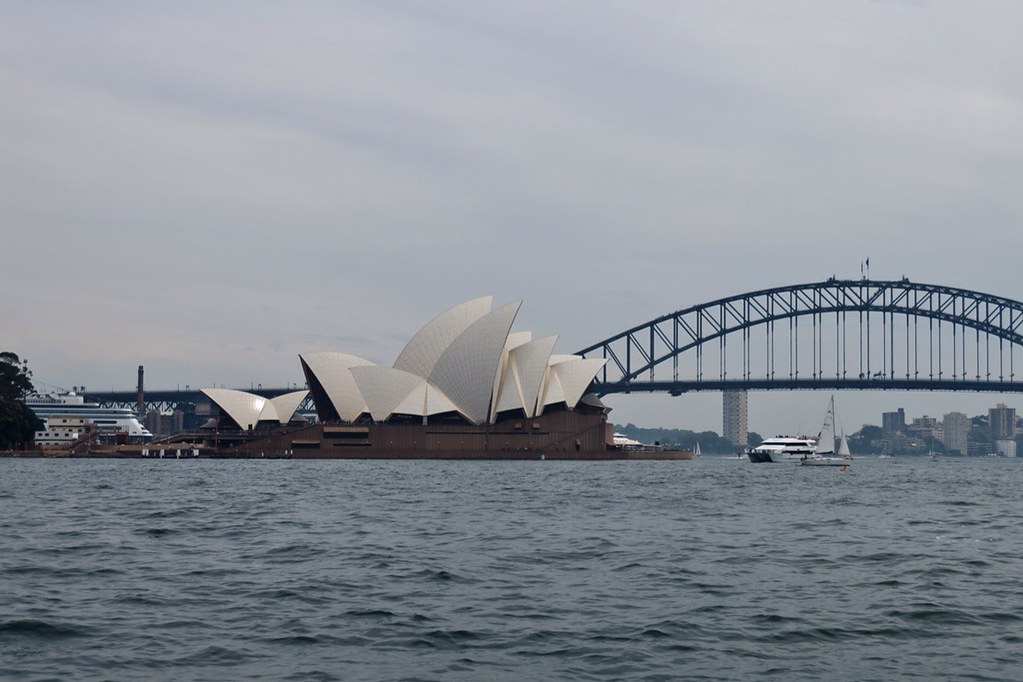
Above: Sydney Opera House and the Harbour Bridge behind, as viewed from the Royal Botanical Gardens.
The Sydney Opera House is a modern expressionist design, with a series of large precast concrete 'shells' each composed of sections of a sphere of 75.2 metres radius, forming the roofs of the structure, set on a monumental podium. The building covers 4.4 acres of land and is 183m long and 120 m wide at its widest point. It is supported on 588 concrete piers sunk as much as 25m below sea level. In short, this is an imposing structure! The Opera House was formally completed in 1973, having cost $102 million, but with an original cost estimate in 1957 of $7 million and a completion date set by the government of 1963, the project was completed ten years late and fourteen times over-budget!

Above: The Harbour Bridge viewed through the Opera House. You can see the chevron pattern on the shells mentioned below.
Although the roof structures of the Sydney Opera House are commonly referred to as shells, they are in fact not shells in a strictly structural sense, but are instead precast concrete panels supported by precast concrete ribs. The shells are covered in a subtle chevron pattern with 1,056,006 glossy white and matte-cream coloured Swedish-made tiles, though, from a distance, the shells appear a uniform white. The idea was to avoid blinding anyone who looked at the building on a sunny day!
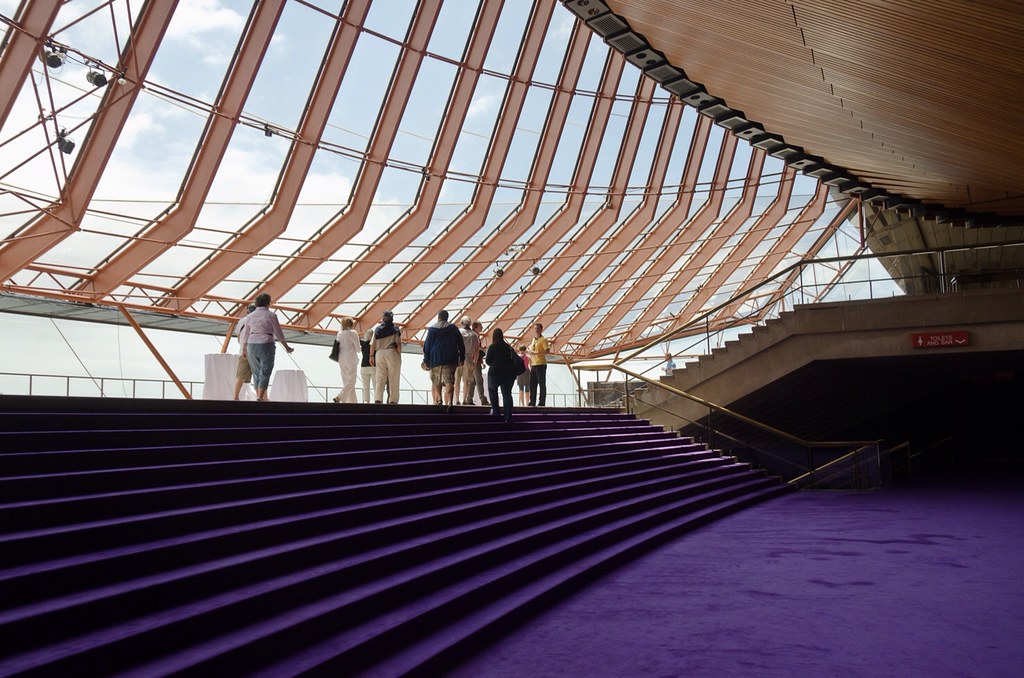
Above: The foyer of the Concert Hall, one of two main venues inside.
Contrary to its name, the building houses multiple performance venues, the two main ones being the Concert Hall located within the western group of shells and the Joan Sutherland Theatre within the eastern group. The smaller venues (the Drama Theatre, the Playhouse, and The Studio) are located within the podium, beneath the Concert Hall. The scale of the shells was chosen to reflect the internal height requirements, with low entrance spaces, rising over the seating areas and up to the high stage towers.
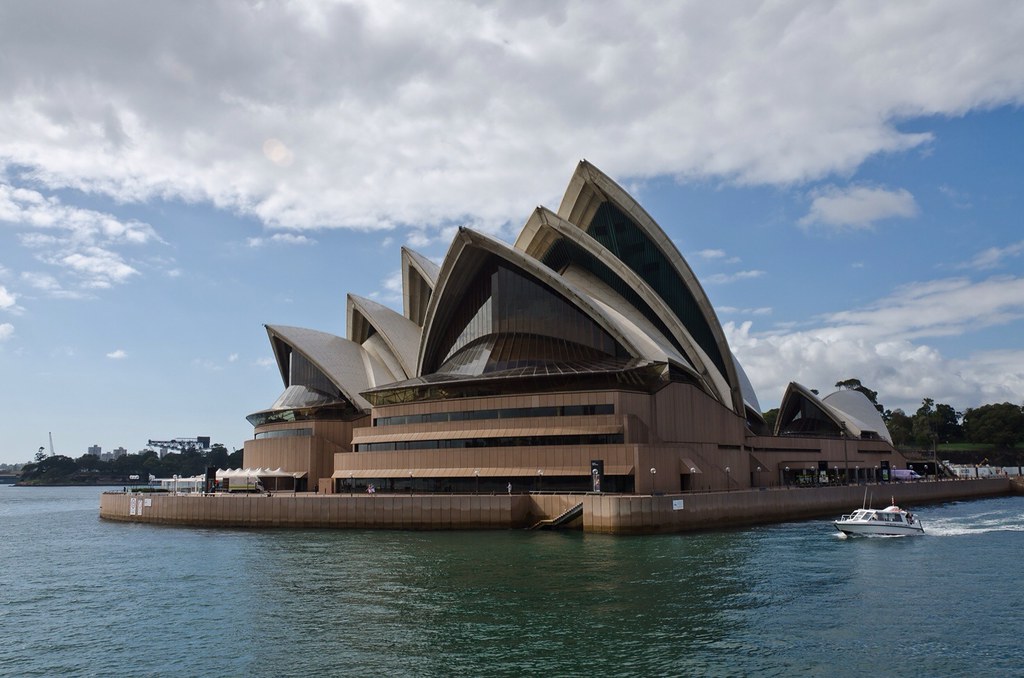
Above: You can clearly see the two separate group of shells which house the two main venues.
On our first visit to Sydney I only got a brief glimpse inside the building but on my second visit, I took a tour of the Opera House. It is among the busiest performing arts centres in the world, hosting over 1,500 performances each year attended by some 1.2 million people and is also one of the most popular visitor attractions in Australia, with more than seven million people visiting the site each year, 300,000 of whom take a guided tour like me!
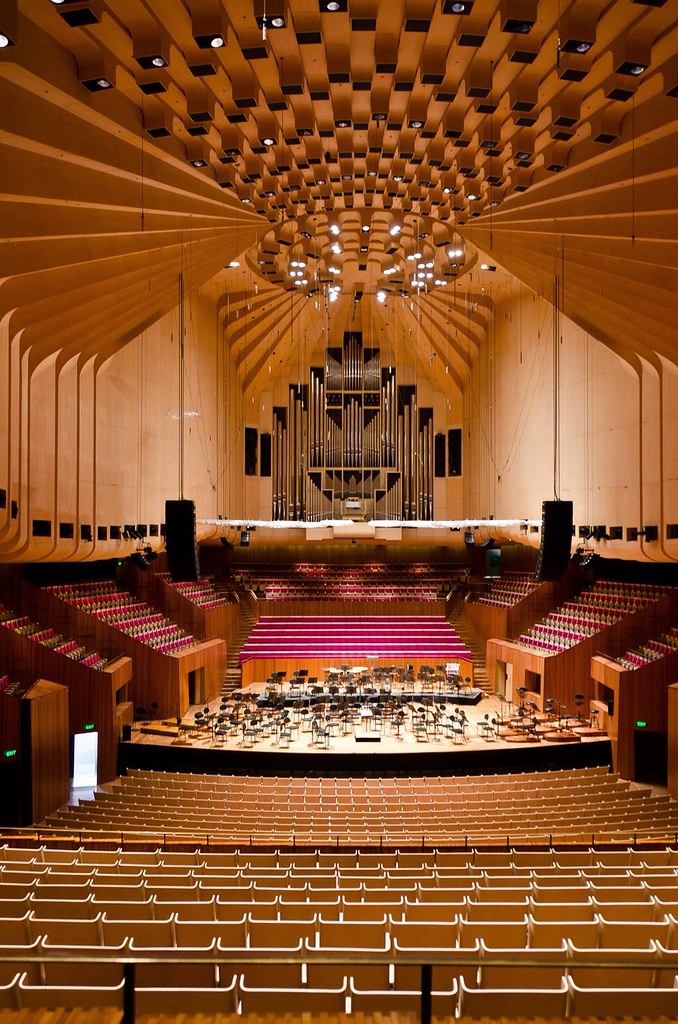
Above: The tour took us inside both venues and we were allowed a sneaky picture in the Concert Hall thanks to our very nice tour guide.
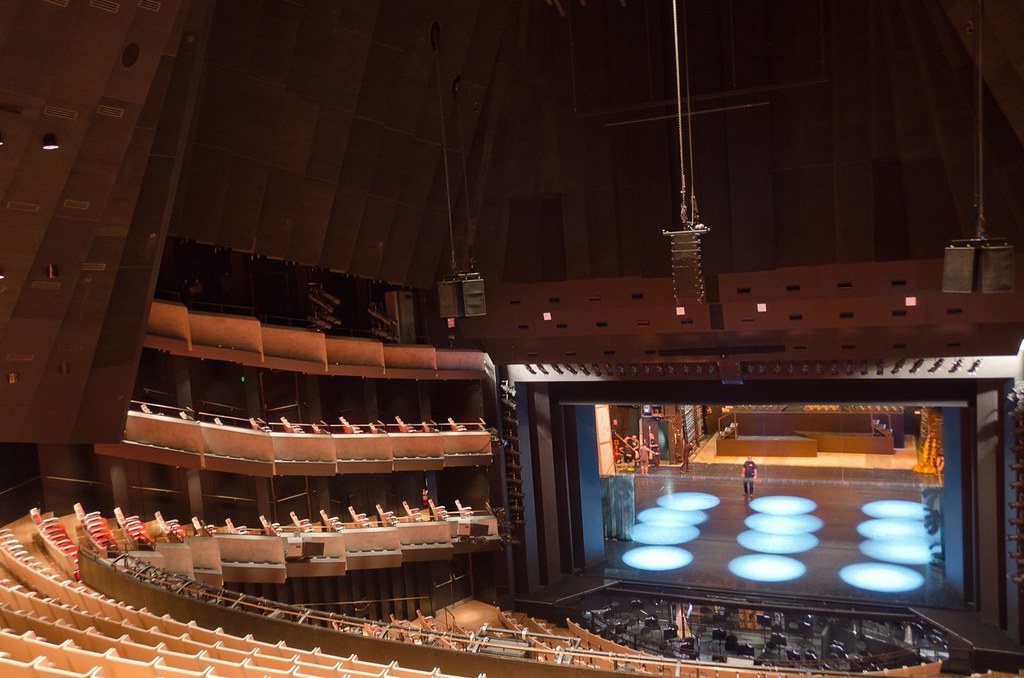
Above: Inside the Joan Sutherland Theatre which hosts opera, ballet and theatre. We weren't allowed to take photos in here, hence the sneaky angle and slightly blurred shot.
Jørn Utzon was one of 233 architects to enter the design competition for the Opera House, launched by Joseph Cahill's New South Wales Government in 1955 and according to legend, Utzon's design was rescued from a final cut of 30 rejects by the noted Finnish architect Eero Saarinen. The government's bold decision to select Utzon's design is often overshadowed by the scandal that followed, which saw Utzon leave the project in 1966, citing unpaid fees and a lack of collaboration as the reason and famously describing the situation as 'Malice in Blunderland'. He was subsequently offered a subordinate role as 'design architect' under a panel of executive architects, without any supervisory powers over the House's construction, but Utzon rejected this. He left the country never to return and in the formal opening by Queen Elizabeth II in 1973, his name was not even mentioned.

Above: A panorama from the Royal Botanic Gardens. From left to right: CBD, Volendam (look closely), Opera House, Harbour Bridge.
In the late 1990s, the Sydney Opera House Trust began to communicate with Utzon in an attempt to effect a reconciliation and to secure his involvement in future changes to the building. In 1999, he was appointed by the Trust as a design consultant for future work and in 2004, the first interior space rebuilt to an Utzon design was opened, and renamed 'The Utzon Room'. At this stage, the architect was too ill to leave his native Denmark and so he died on 29 November 2008 having never seen the completed Opera House - his life's work - in person.
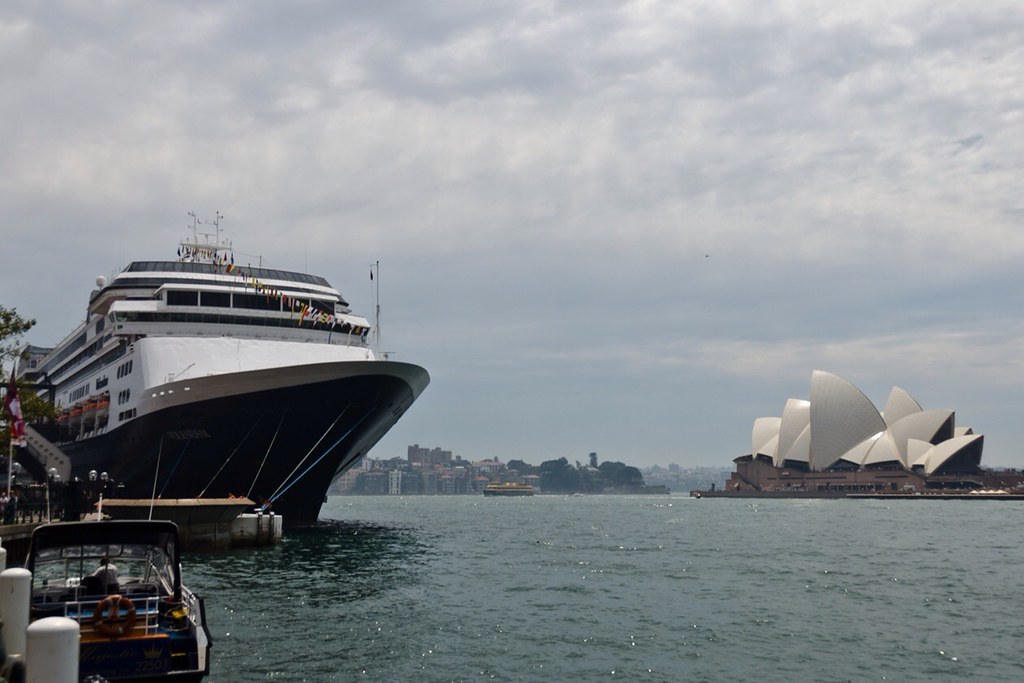
Above: The Volendam docked at Circular Quay on our first visit.
On my second visit to Sydney, I took an early morning ferry from Circular Quay to the suburb of Manly, and the famous Manly Beach. A 30 minute boat trip takes you a world away from the city and into a charming suburban town and resort.
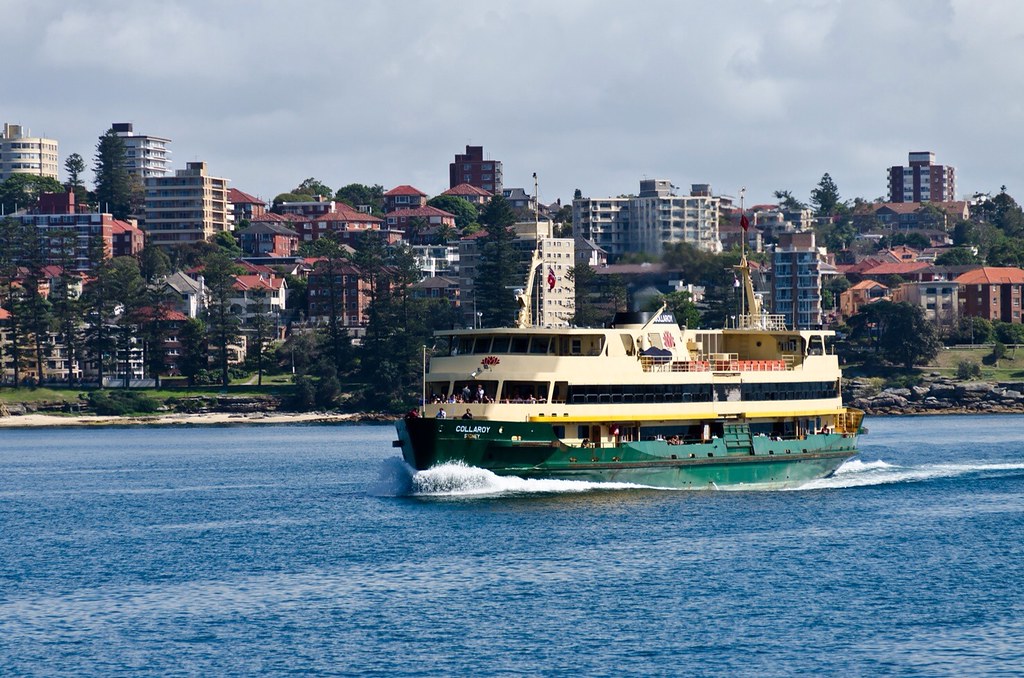
Above: Pulling into Manly, with the return ferry just departing.
Manly Beach, along with Bondi Beach is famous for its surfing but the locals also like to play volleyball or just relax on the white sand.

Above: Manly Beach.
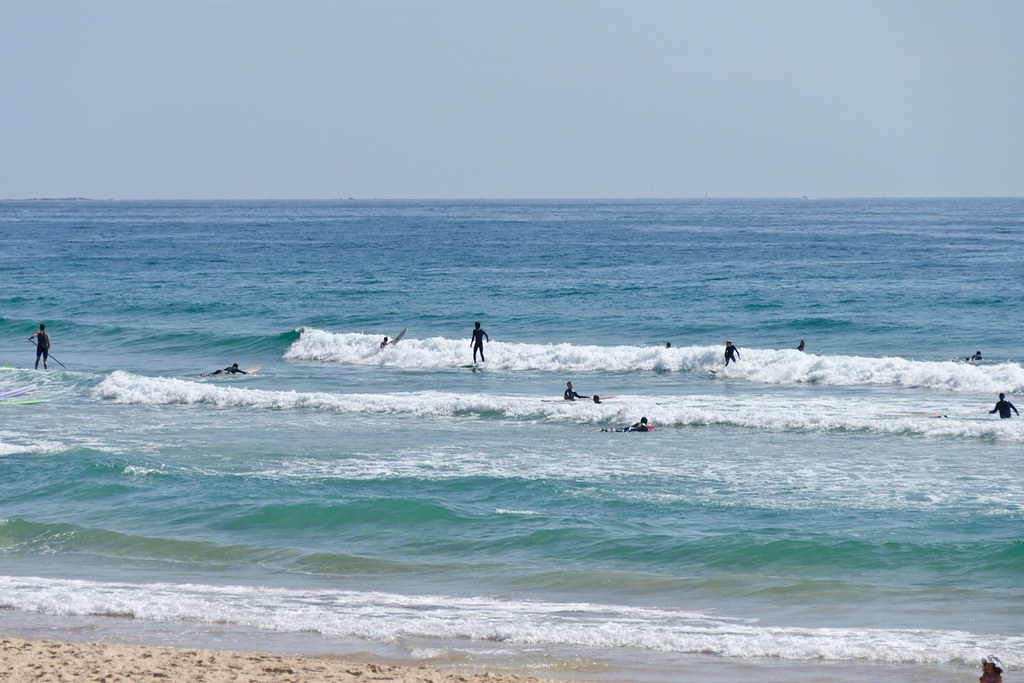
Above: Catching waves at Manly Beach.
After my brief visit to Manly I toured the Opera House and then went straight to the Harbour Bridge to see how high I could get without actually climbing it ('BridgeClimb' has made it possible for tourists to legally climb the southern half of the bridge arch). It turned out that one of the four pylons contains a museum and tourist centre with a 360° lookout at the top providing views across the harbour and city like this one:
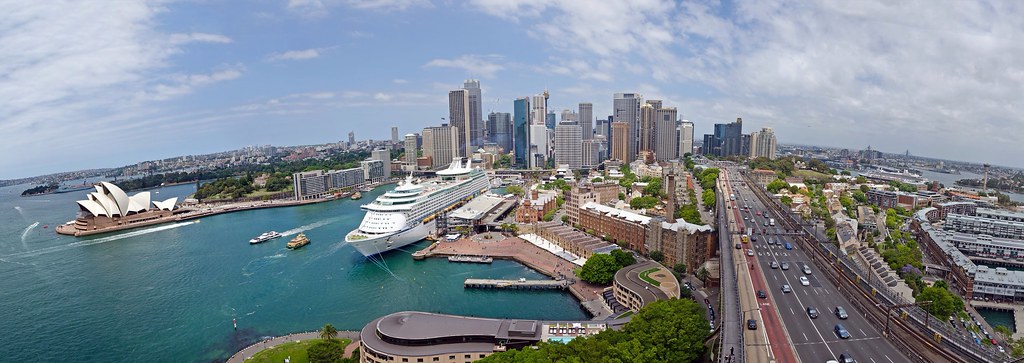
Above: My best panorama ever! Can you spot the Volendam on the far right, docked at Darling Harbour? I'll help you out with a close-up:

Above: The Volendam docked at Darling Harbour.
A little background for you: the Sydney Harbour Bridge is a steel through arch bridge across Sydney Harbour that carries rail, vehicular, bicycle and pedestrian traffic between the Sydney central business district (CBD) and the North Shore. Nicknamed 'The Coathanger', the bridge was designed and built by British firm Dorman Long and Co Ltd of Middlesbrough and opened in 1932.
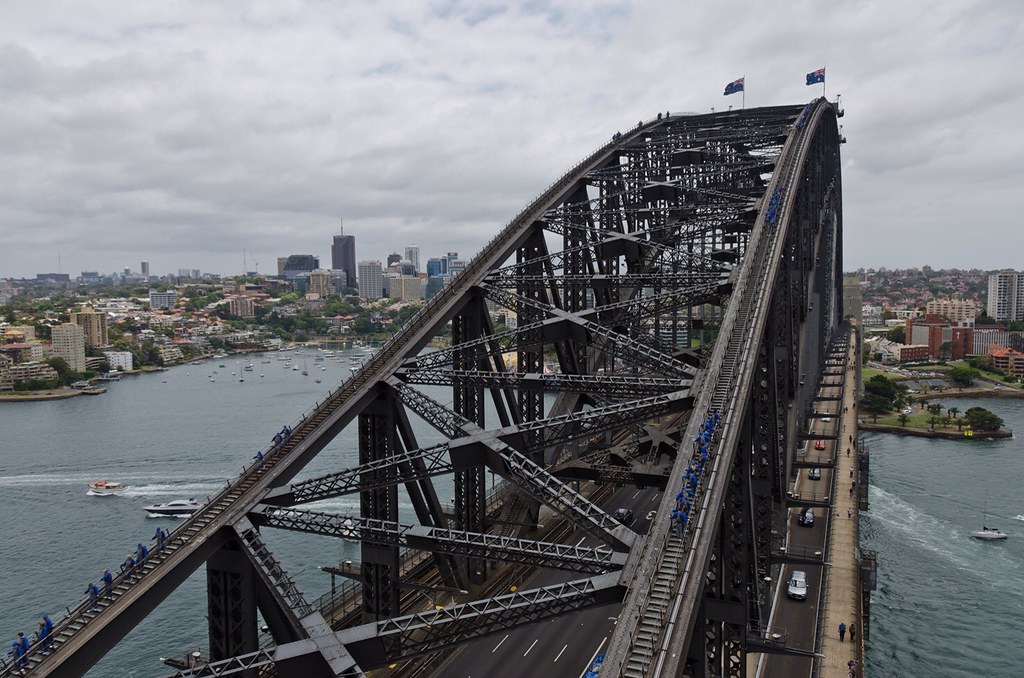
Above: Harbour Bridge viewed from the south-east pylon. Note the climbers on top of the arch.
The arch has a span of 503m and its summit is 134m above sea level; although expansion of the steel structure on hot days can increase the height of the arch by as much as 18cm. The pylons were designed by the Scottish architect Thomas Tait, and whilst abutments at the base of the pylons are essential to support the loads from the arch and hold its span firmly in place, the pylons themselves have no structural purpose. They were included to provide a frame for the arch panels and to give better visual balance to the bridge and in 1942 were modified to include parapets and anti-aircraft guns designed to assist in Australia’s defence and general war effort.

Above: The older buildings in the foreground are part of 'The Rocks' - a heritage area of downtown Sydney.
Close by to the Harbour Bridge is 'The Rocks', an older part of town with many museums and a bustling marketplace. Just beyond the bridge, the Rocks peters out into a distinctly suburban area which is quieter and more run down, despite being a few minute's walk from the skyscrapers of the CBD. This is the route I took to get to the Volendam docked at Darling Harbour on our second visit:

Above: The quiet suburban area in between Circular Quay and the tip of Darling Harbour.
I had very little time to explore Darling Harbour which is a huge entertainment destination but I did my best to (power)walk around most of it. I walked past Madame Tussaud's, Sydney Aquarium, Sydney Zoo, the world's largest i-max, as well as the Chinese Garden of Friendship. I'll leave you with a final picture from Darling Harbour. Thanks for reading - I know it was a long post - but I hope you enjoyed following me around Sydney. I will return one day to properly experience the city but I was pleased with how much I managed to cram in before we sailed off to new destinations!
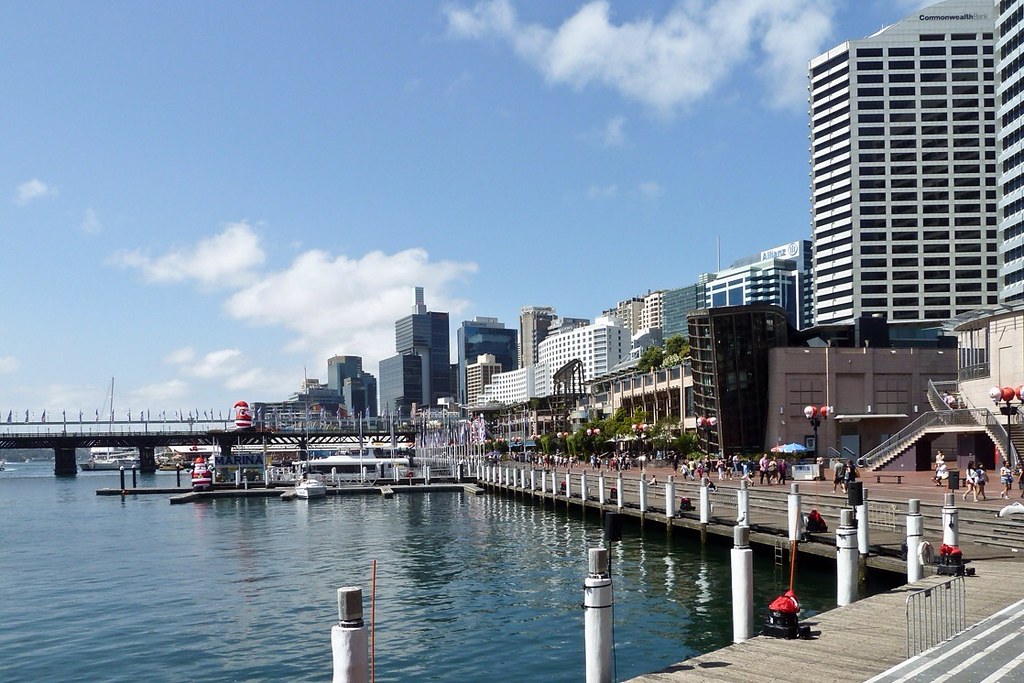
Above: Darling Harbour.
